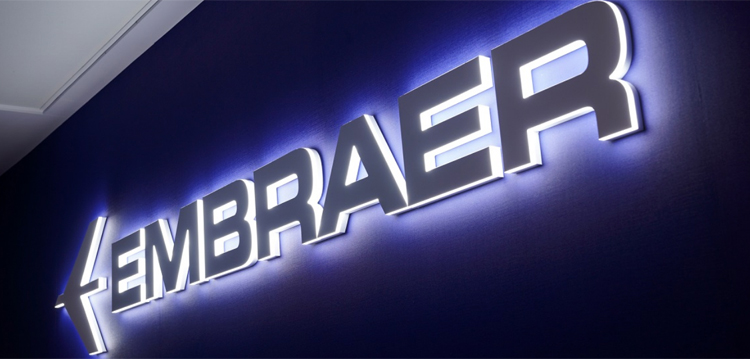Embraer participates at GADLEX 2023
Showcasing aircraft products & solutions from its commercial aviation, defense and urban air mobility businesses

Embraer will participate at GADLEX 2023, exhibiting aircraft products and solutions from its commercial aviation, defense, and urban air mobility businesses. The exhibition will be held in Gumi City, in Gyeongsangbuk-do, the province with whom Embraer recently inked a Memorandum of Understanding to promote collaboration across key aviation-related matters including promotional activities, consultative assistance, and infrastructure project opportunities.
“We are honoured to be at GADLEX and to be part of the Korean aerospace ecosystem,” said Raul Villaron, Vice President of Sales & Marketing, Head of Asia Pacific - Embraer Commercial Aviation. “Embraer is internationally recognized for the quality of its aircraft and for its long history of successful strategic partnerships. Over the past two decades, Embraer has designed, built, certified, and delivered twenty-one different aircraft platforms - a reflection of Embraer’s engineering and innovation pedigree. We look forward to strengthening our engagement with the broader Korean aerospace community.”
Innovation is key to Embraer. In 2022, around 50% of the company's revenue came from innovations carried out in the last five years.
Embraer’s developments in Korea
Embraer’s E190-E2 commercial jet has demonstrated that it has the technical capabilities to support Korea’s national objective of intra-country connectivity: the aircraft has the range to serve routes of up to seven hours, along with the proven capability of short runway performance.
In May this year, Embraer’s E190-E2 conducted a demonstration flight in Gyeongsangbuk-do, flying from Pohang Airport, over Ulleung-do Island, and back. With over 80 guests on board, including sufficient fuel for the subsequent onward flight from Pohang to Seoul, the E190-E2 conducted a simulated short runway landing at Pohang Airport over a runway distance of 1,066 metres. This outstanding short runway performance capability uniquely positions the E190-E2 as the only narrowbody aircraft that can access a 1,200 metre runway, rain or shine, such as the new Ulleung-do Island Airport which is scheduled for completion by December 2025.
In October 2022, Embraer signed several Memoranda of Understanding with Korean aerospace companies ASTG (Aerospace Technology of Global), EMK (EM Korea Co.) and Kencoa Aerospace with the objective of strengthening collaboration with Korean defense industry partners for the future supply of parts for the Embraer C-390 Millennium aircraft. The C-390 Millennium aircraft is competing in the Large Transport Aircraft (LTA) II Program being run by the Defense Acquisition Program Administration (DAPA).
Separately, in May 2021, Embraer signed a contract with Aerodata AG, from Germany, to sell the state-of-the-art Praetor 600 which will be converted into a Flight Inspection Aircraft. After the modification, the aircraft will be delivered and operated by South Korea’s Ministry of Land, Infrastructure and Transport (MOLIT), Seoul Regional Office of Aviation, Flight Inspection Center.
Embraer’s spin-off company Eve is dedicated to accelerating the UAM ecosystem. Benefitting from a start-up mindset, backed by Embraer’s more than 50-year history of aerospace expertise, and with a singular focus, Eve is taking a holistic approach to progressing the UAM ecosystem, with an advanced eVTOL project with a projected entry into service date of 2026, a comprehensive global services and support network and a unique air traffic management solution. In 2021, Eve was involved in a concept of operations development work in South Korea.
Embraer is committed to developing products, solutions, and technologies to contribute to the aviation industry’s goal of achieving net zero emissions by 2050. Embraer aims to be carbon neutral by 2040 and achieve carbon neutral growth from 2022. It plans to implement 25% sustainable aviation fuel (SAF) use in its operations by 2040 and 100% renewable energy sources by 2030.





